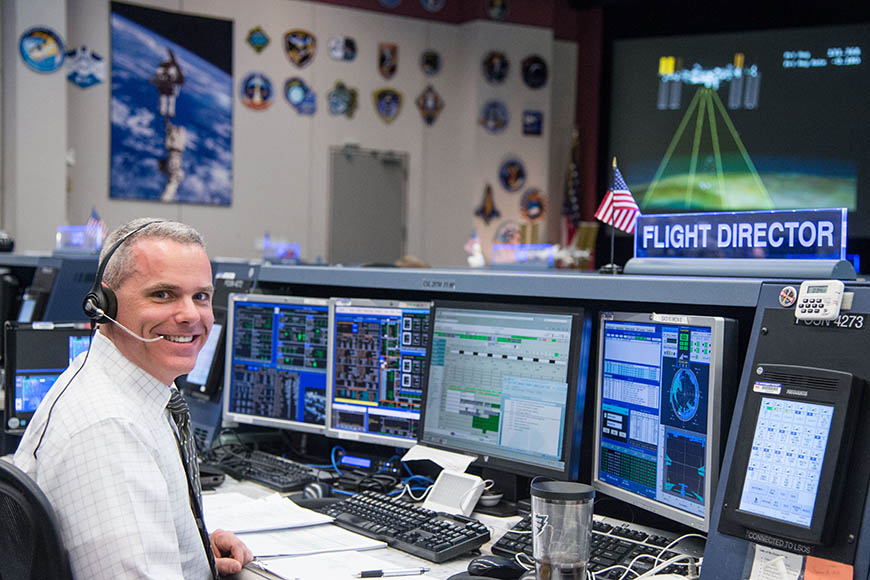Alumnus and NASA Flight Director Engineers the Unknown

Brian T. Smith ’93 EE
As the College’s Patrick J. Cunningham, Jr. and Susan Ward '80 Endowed Lecture Series in Engineering speaker, NASA flight director Brian T. Smith ’93 EE, presented “The International Space Station: Engineering the Unknown”.
Describing the International Space Station as “the greatest engineering feat of mankind,” Smith explained how, after 11 years of construction and 115 space flights conducted on five different types of launch vehicles, the ISS now serves as a world class orbiting laboratory. “That orbiting laboratory,” he added, “has sustained a permanent human presence for over 17 years, making it also a bedroom, bathroom, kitchen, closet, gym and shipping/receiving center.” Keeping the ISS operational and supplied is a 24/7 job performed by specialized engineering and operations teams from around the world. Smith noted that despite the wealth of knowledge amassed over the years, and the testing, training and meticulous planning involved in their execution, “Missions do not always go as planned, and sometimes there is not a lot of information available to figure out why.” Smith shared how the NASA community uses creative engineering, reverse engineering and real-time engineering to solve problems in the absence of key information.
Smith’s NASA Resume
- After graduating from Villanova magna cum laude in 1993, Smith spent five years as a hardware engineer for L-3 Communication Systems–East, where he designed, built and tested communication flight hardware for the International Space Station.
- In 1998, he moved to Houston, TX, where he worked for the United Space Alliance as an International Space Station flight controller in NASA’s Mission Control Center. In this role he was responsible for all communication systems on the ISS, some of which he designed, built and tested in his prior job. He logged over 3000 hours in Mission Control as a flight controller.
- In February, 2005, Smith was selected as a NASA flight director and earned his ISS certification a year later, becoming the 64th flight director in NASA’s manned space flight history. Highlights in his NASA career include:
- Leading the first non-Russian unmanned cargo flight to ISS—the European Space Agency’s Automated Transfer Vehicle Jules Verne mission
- Serving as NASA’s lead FD for Orbital Science Corporation’s Cygnus unmanned cargo mission, Orb-1
- Leading a critical, rapid response team to plan and execute a contingency spacewalk in 11 days to replace a failed computer on the outside of ISS
- Three years later, leading the same team in responding to a similar failure, this time completing the mission in just over two days
- Twice serving as the operations lead to the agency-wide NASA team assembled to investigate the failure of two Russian unmanned cargo spacecraft missions
- Currently leading the first expandable module in manned space flight history, the Bigelow Expandable Activity Module, as well as the Dream Chaser Cargo System, an unmanned cargo spacecraft system
